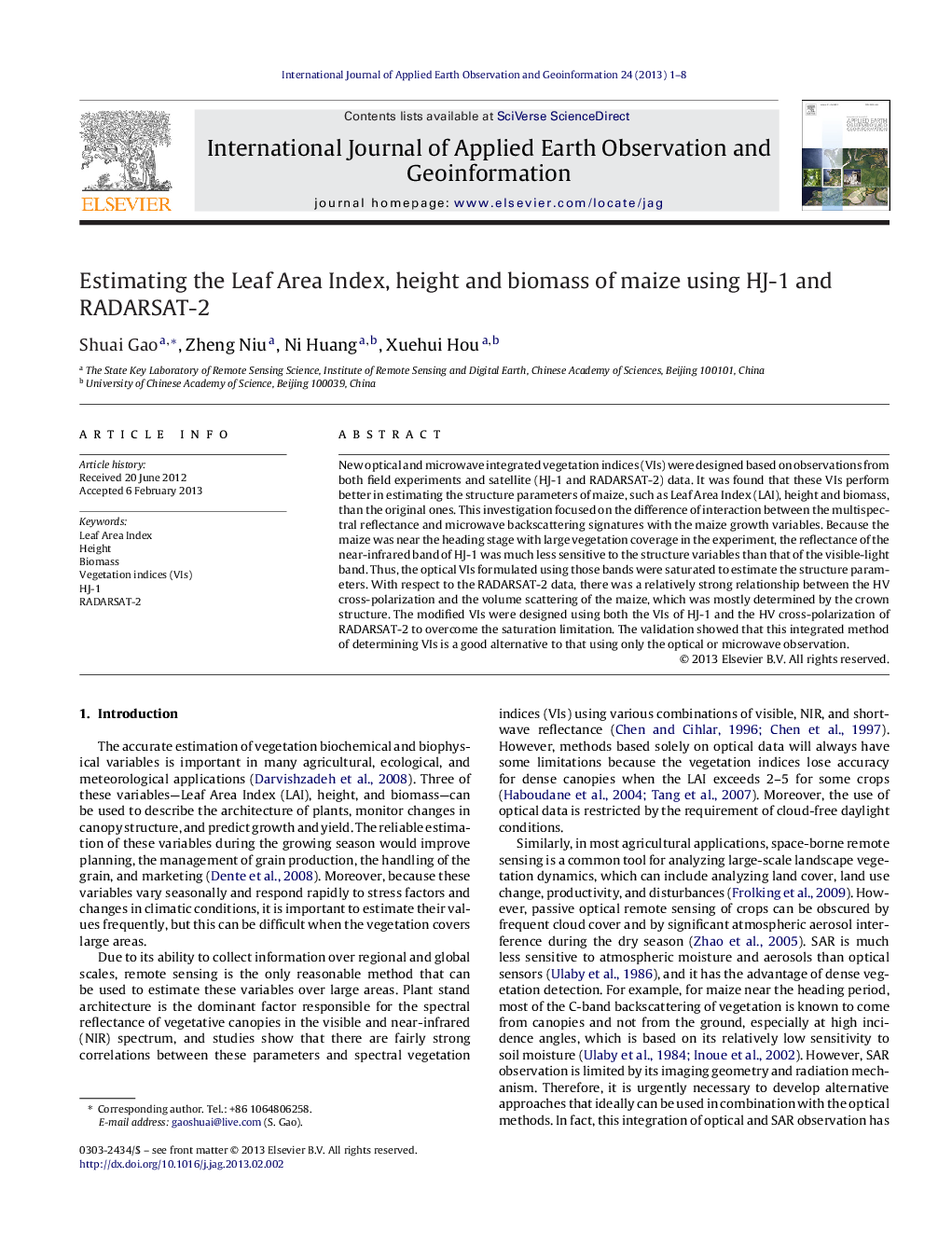| Article ID | Journal | Published Year | Pages | File Type |
|---|---|---|---|---|
| 4464794 | International Journal of Applied Earth Observation and Geoinformation | 2013 | 8 Pages |
New optical and microwave integrated vegetation indices (VIs) were designed based on observations from both field experiments and satellite (HJ-1 and RADARSAT-2) data. It was found that these VIs perform better in estimating the structure parameters of maize, such as Leaf Area Index (LAI), height and biomass, than the original ones. This investigation focused on the difference of interaction between the multispectral reflectance and microwave backscattering signatures with the maize growth variables. Because the maize was near the heading stage with large vegetation coverage in the experiment, the reflectance of the near-infrared band of HJ-1 was much less sensitive to the structure variables than that of the visible-light band. Thus, the optical VIs formulated using those bands were saturated to estimate the structure parameters. With respect to the RADARSAT-2 data, there was a relatively strong relationship between the HV cross-polarization and the volume scattering of the maize, which was mostly determined by the crown structure. The modified VIs were designed using both the VIs of HJ-1 and the HV cross-polarization of RADARSAT-2 to overcome the saturation limitation. The validation showed that this integrated method of determining VIs is a good alternative to that using only the optical or microwave observation.
► Designed new vegetation indices (VIs) combined optical with microwave data. ► Both HJ-1 and RADARSAT-2 satellite observation were both used during the experiment. ► Better performance of new VIs was validated in estimating the structure parameters of maize. ► Sensitive analysis was conducted to explain the mechanism.
